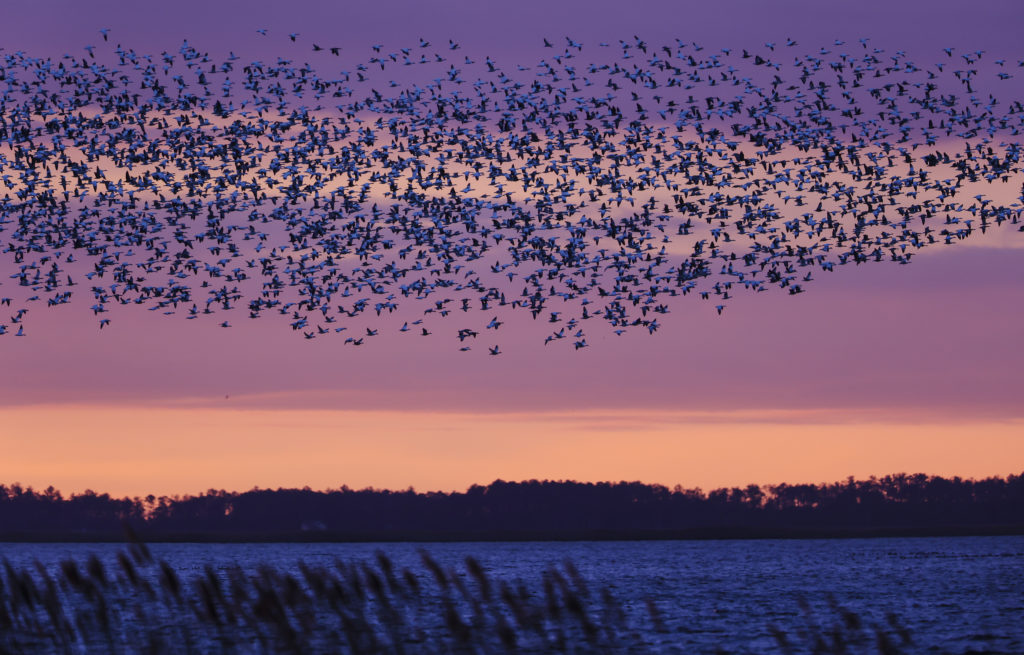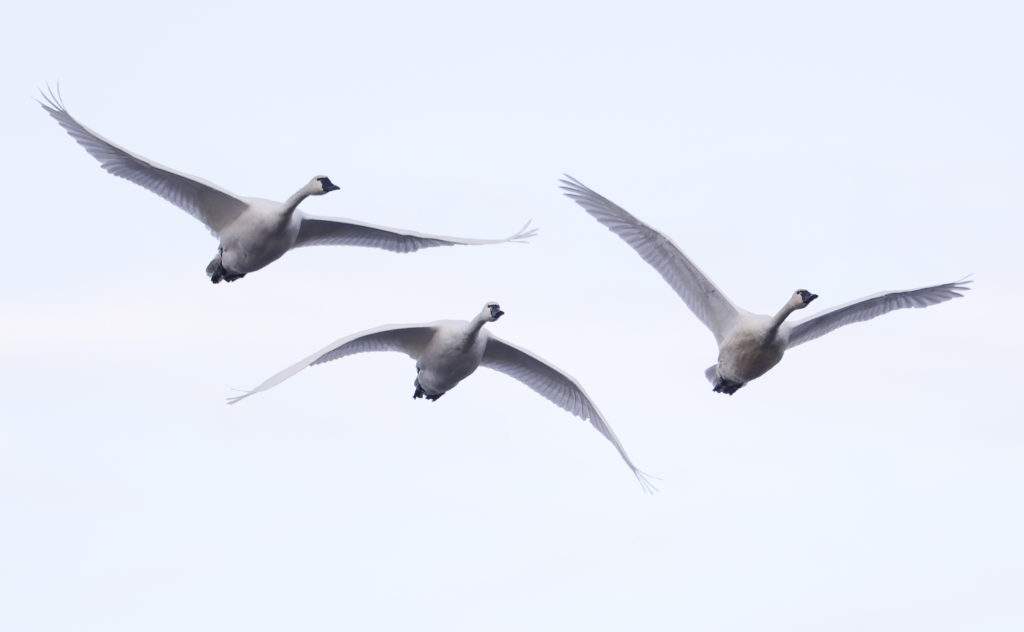Creature Feature

Visiting Blackwater National Wildlife Refuge
By Wayne Bierbaum
Several of the U.S.’s 568 National Wildlife Refuges have a one-way road, a wildlife drive, that runs through sensitive areas. At Blackwater National Wildlife Refuge in Cambridge, the wildlife drive is close to six miles long.
Blackwater National Refuge was created in 1933 as a protected area for migratory birds on the Atlantic Flyway, the north-south route that birds travel during migration. The entire refuge is around 30,000 acres of coastal forest and wetlands that surround the Blackwater River. Many sections of the refuge allow hunting and fishing away from the wildlife drive. Along with the wildlife drive, hiking trails are present but waterproof boots are required.
The wildlife drive is basically a road built on a series of dikes that create freshwater ponds. In the winter, the ponds and flooded fields support many species of waterfowl. The refuge is also known to have the largest concentration of nesting bald eagles on the East Coast.
I recently took a trip to the refuge. In my head I had a list of animals I wanted to find on this visit. The refuge is a 90-minute drive from my home and I arrived when the gates opened, 30 minutes before sunrise. My first stop was at a pull-off area halfway through the drive, which is where I get the best sunrise views. As I was facing the sunrise, a large flock of snow geese were to my right, in the middle of the river. It is the safest place for them to be overnight. Before the sun was fully up, several thousand geese lifted up together, flew in a few huge circles and then overhead. Many times, they land and feed near the visitors’ center which gives me close-up photos, but not today. I also counted five eagles fly by at sunrise.
Once the sun broke through, I started the wildlife drive over. I was looking for some specific small birds (sparrows and nuthatches) as I took the initial left turn. Instead, I found a northern harrier, bluebirds, and woodpeckers. I was also looking for the Delmarva fox squirrels that live in this area.
Next, I drove through a wooded area where owls and pileated woodpeckers are frequently seen. I heard them but they were not close. By the time I arrived back to where I watched the sunrise, the tundra swans were starting to leave the flooded field in search of food. They are huge and they fly by low, calling to each other. Another harrier flew by, on the hunt for a small bird or mouse, when it suddenly dropped into tall grass and disappeared. Three more eagles fly by, evidently mad with each other. I’m still parked at a pull-off when hundreds of Canada geese start flying in. The entire time, small clusters of rapidly flying ducks of all sorts zoom by. Herons are stalking the edge of the water and a young eagle lands in a nearby pine tree. An adult eagle tries and fails to catch a rabbit. The swans that stayed behind start calling and then the geese start honking.

By 9 a.m., most of the activity had stopped and I left. Driving back on Egypt Road, I spotted a male and a female kestrel. They are becoming rare, so that is a good sign.
My favorite time to visit Blackwater is on a sunny day after a snow. The animals seem to be more active then and photos are enhanced by the light reflecting off the snow. I rarely go in the middle of the summer but eagles, ducks and wading birds are there then, too.
Blackwater sits at sea level and, as with Annapolis, it floods often. Trees in the refuge are dying from salt water intrusion and from being under water for long periods. The wildlife drive does not flood but the trails through the refuge are almost always wet, wear dry boots if you plan to walk. Maple Dam Road which connects refuge sections floods weekly; plan accordingly.
When you visit the refuge follow the signage and be alert. Maybe the tree trunk you are looking at is hiding an owl. Animal activity is everywhere, especially in early morning or evening, if you stop and take the time to look.
